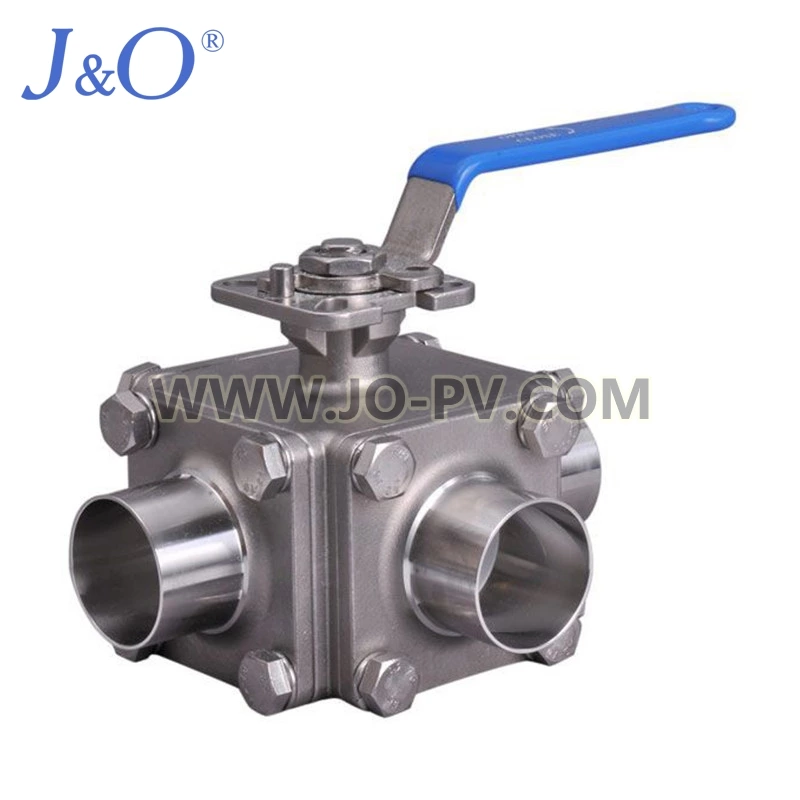Sanitary Ball Valve Standards
Sanitary Ball Valve serve as core control components in compressed air systems, primarily performing media switching and flow regulation. Industrial applications require optimized performance parameters based on specific standards. This article summarizes the mainstream technical requirements based on practical scenarios.
Material Standards
Main components are constructed of austenitic stainless steel 316 or higher. The internal surfaces of the valve body in contact with the fluid are shot peened to a roughness of Ra ≤ 0.8μm. The ball must be forged and hard-plated to a surface hardness ≥ HRC58. The sealing surface is welded with Stellite alloy, and the valve seat can be equipped with a polytetrafluoroethylene (PTFE) elastomer layer. The metal housing must be certified by a reputable organization for material re-inspection. Cast steel is not acceptable for pressure-bound components.
The pipe end flanges are manufactured in accordance with HG20592 standard with a raised plate design and a contact width of 12-15mm. Clamp-type quick-connect connections are permitted for pipes below DN25. The nominal pressure rating must not be lower than 1.6 MPa, and full-pressure sealing capability must be maintained at 80°C. Structural Optimization
The flow path must maintain a full-bore design. Reduced-bore products are only permitted at the end of regulating branches. Valve cores with pressure-equalizing holes should be designed for pipes with diameters exceeding DN150. The bearing mechanism preload relief system must be marked with the minimum operating torque. Handwheels must be equipped with a mandatory anti-static bridge circuit, and the operating mechanism connection must be equipped with a hexagonal safety lock.
Three-port valves must be permanently marked with the air source direction. Valves with dual vent ports must be self-balancing under zero pressure differential conditions. An integrated structure with a pre-installed 100-mesh stainless steel filter at the air inlet is optional for special operating conditions. Actuator installation orientations of 90 degrees downward are prohibited.
Performance Verification
The manufacturer must provide a destructive strength test report certified by DNV or TS. The standards cover pressure bearing at 7.0 times the PN value and 24 weeks of constant high-pressure water immersion. Valves with variable flow direction must undergo 6,000 cycles of bidirectional alternating load fatigue testing. The temperature cycle test span must include extreme conditions from -40°C to 180°C. The flow capacity CV value error is permitted to not exceed 5% of the rated value, and the valve must maintain a leakage level of 1 μL/min under continuous operation at a frequency of 1500 Hz. In addition to 60,000 full-stroke opening and closing cycles, the complete system lifecycle assessment must also undergo a particle wear simulation test procedure for at least 8 hours.
During final commissioning, the system manufacturer must perform random inspections of the assembled valves using helium mass spectrometry. The permissible leakage rate at 1.3 times the maximum operating pressure must not exceed Class A according to GB/T13927. All connected components must undergo a 3-degree internal pendulum impact test, with the amplitude curve meeting MIL-STD-810G specifications.
Packaging Specifications
The surface coating thickness must be ≥ 120 μm and conform to the GSB G51001 color standard. During storage and transportation, the relative displacement between the valve body and the outer box must be limited to ±2 mm. The product must be equipped with a polyurethane shock-absorbing base and a humidity indicator card built into the shipping box. The stacking height must not exceed three layers. Standard maintenance signs must be engraved with lubrication intervals, and PTFE valve seat products must be labeled with UV protection requirements. The electrical interface meets the IP68 waterproof rating standard, and the signal terminals feature a locking system to prevent mis-insertion and rotation.
